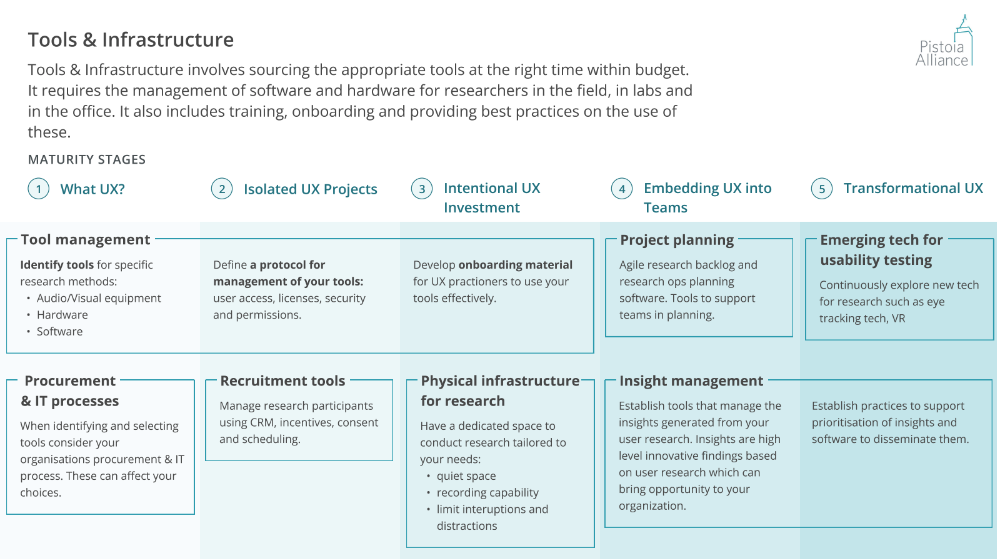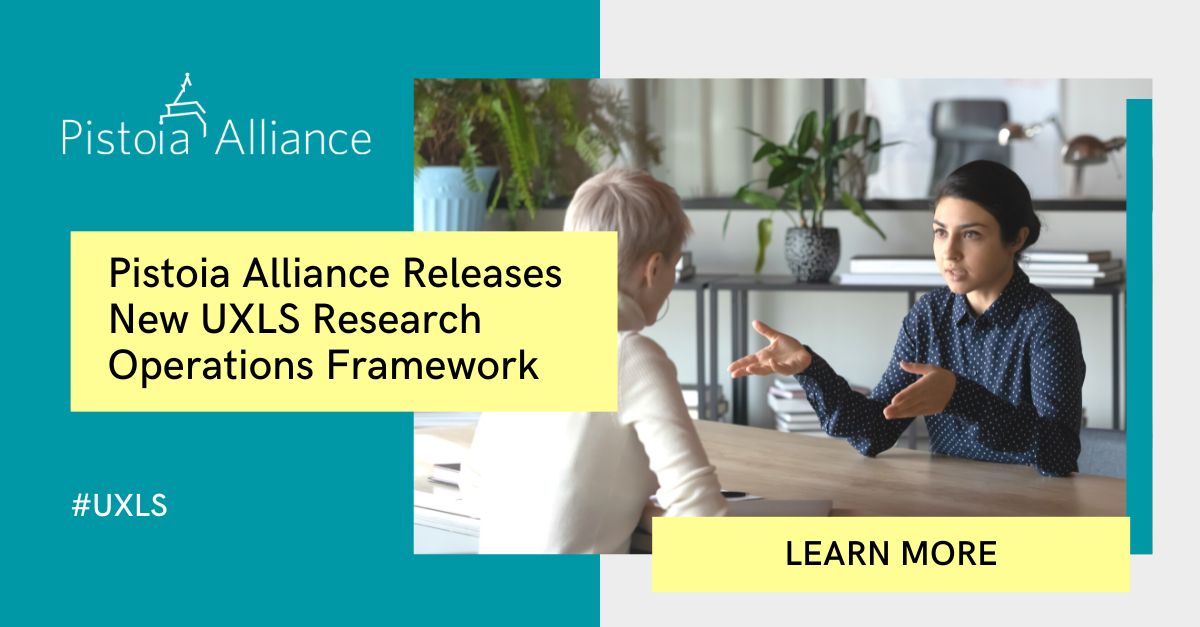Boston, US, January 19, 2023: The Pistoia Alliance, a global, not-for-profit alliance that advocates for greater collaboration in life sciences R&D, has released the first version of the User Experience for Life Sciences Research Operations framework. The framework supports User Experience practitioners in scaling up their User Research program by giving them guidelines on what should be feasible based on their UX maturity. The freely available framework is based on the ResearchOps Community framework but is tailored specifically to the life sciences taking into account regulatory compliance.
As we continue to drive innovation in life sciences through User Centred Design and the practice of User Experience, a core component of good user experience is a continuous process of user research. User research is the methodical study of target users, including their needs and pain points, so designers have the sharpest possible insights to make the best designs. “As UX becomes mainstream and demand for user research continues to grow, UX teams need to find ways to scale up their user research programs. Of course, every organization has a different UX maturity and that is why we designed the framework to support anyone regardless of whether they are just starting up their UX teams or have very large UX teams” commented Paula de Matos, UXLS Project Lead.
What is it?
Research Operations, otherwise known as ResearchOps or ReOps, refers to a framework for how to manage people, data, and processes in order to effectively support user research activities. The ResearchOps framework presented involves the development and coordination of several key pillars which we have defined as,
- Environment & Organisational Context – socializing and evangelizing your UX research within your organization from an educational, cultural, and environmental perspective.
- UX Methods & Processes – defined methodologies, processes, and standardization of user research. This includes metrics, research guidelines, and developing a research narrative across the organization.
- UX Practitioners – dedicated UX research practitioners with a learning path to grow their skillset.
- Participants – A core challenge within life sciences is engaging with research participants, such as scientists and patients. This requires a framework to identify personas, recruit and engage with participants.
- Tools & Infrastructure – involves sourcing the appropriate tools at the right time within budget.
- Regulatory & Compliance – an informed framework for conducting research that is safe, legal, and ethical. This includes privacy, regulatory compliance, consent management, risk assessments, etc.
- Data & Knowledge Management – Knowledge management is intertwined with the governance and socialization of research, which needs to be gathered, stored, synthesized, reused, and shared.
Using these pillars, 5 levels of maturity are presented based on the UXLS Maturity Model, which can be used by organizations to help establish the current state of their ResearchOps and to determine what is needed to further mature their internal ResearchOps practice.

Why is this important?
Providing a standard framework to support how user research activities are done, this framework enables organizations to more effectively store and share user data. Companies can more easily access relevant insights from user research conducted while protecting information about participants involved in research studies. Organizations that adopt this framework, will free up UX practitioners to focus on the important task of understanding and communicating user insights rather than the mundane tasks of collecting, storing, and accessing data.
How can it be used?
The Research Ops framework uses the same maturity levels as the Pistoia Alliances UX Maturity Model and works in a similar fashion. After determining an organization’s current maturity level, all the activities at that level and in previous columns can be reviewed. From there, activities relevant to the organization’s maturity level can be reviewed to identify activities that have successfully been and more importantly, those that have been missed. With that knowledge, organizations can build an actionable road map so they can continue to grow and mature their ResearchOps capabilities.
Where can I find it?
The framework can be found on the UXLS Community page alongside other key resources.
Download UXLS ResearchOps framework
Contact
Giovanni Nisato
UXLS Project Lead, Pistoia Alliance




